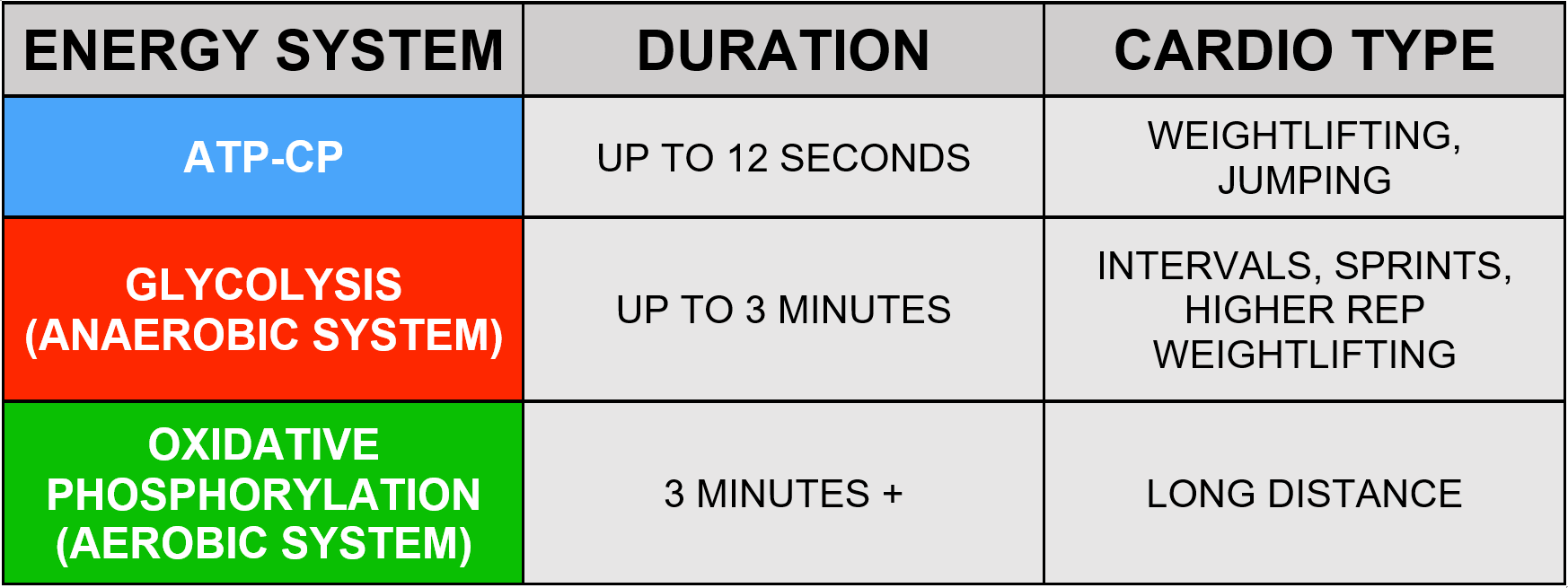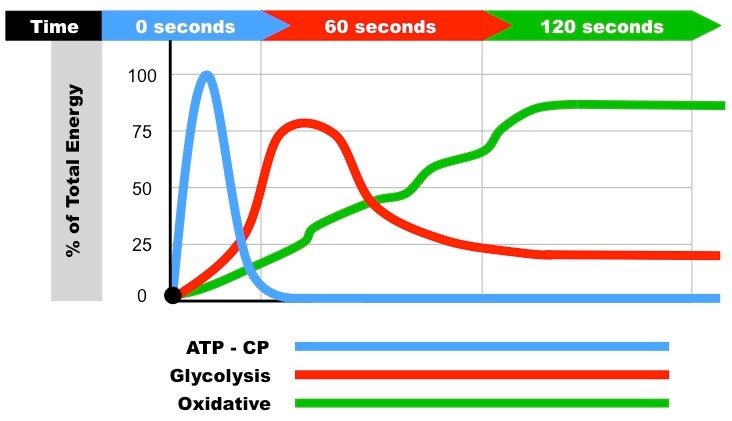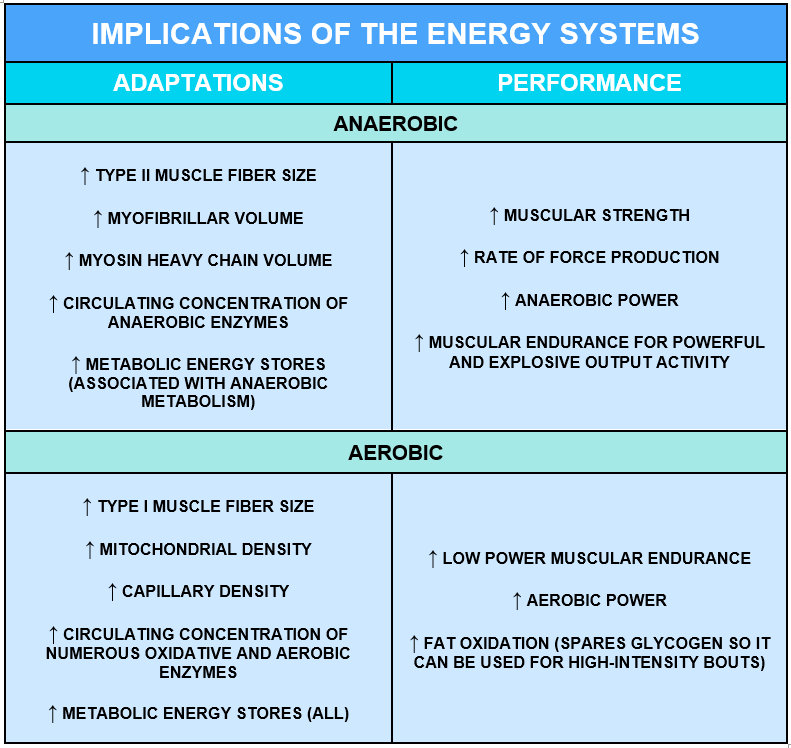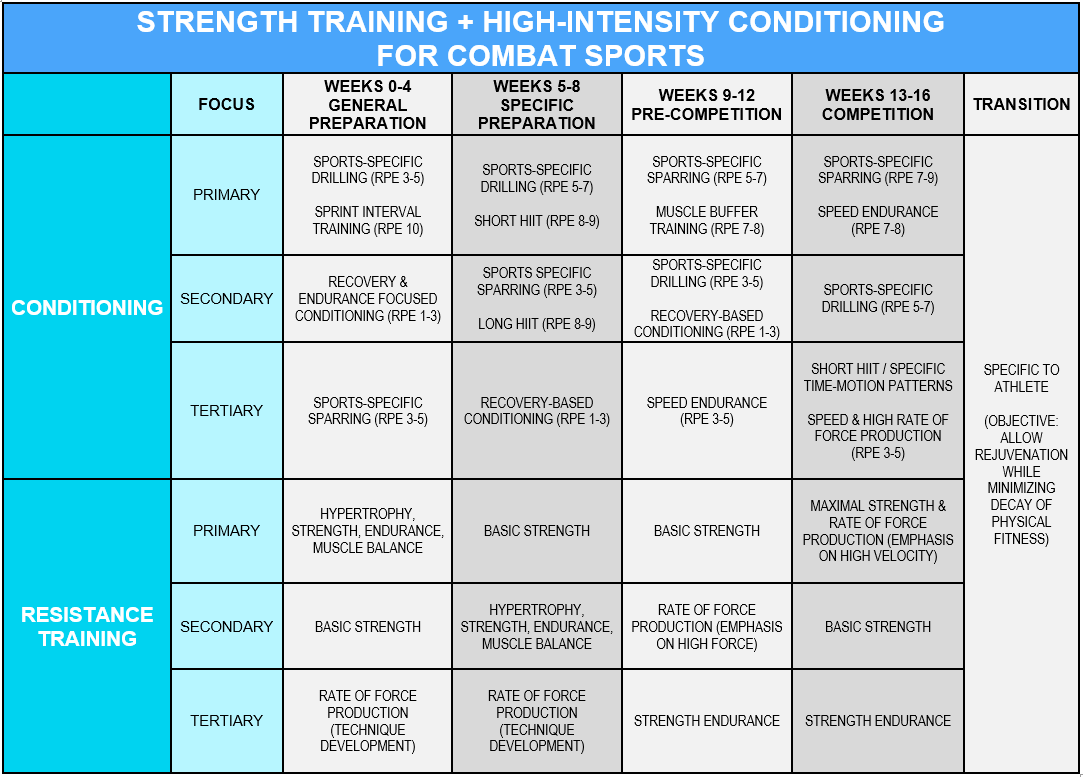Guide to High-Intensity Training for Combat Athletes
Combat sports are high-intensity activities that require power, explosivity, and endurance. They’ve been growing in popularity over the past few years as they’ve been introduced to the Olympic Games, and they include sports such as judo, taekwondo, boxing, various types of wrestling, karate, and more. It’s important for combat athletes to train in a manner that will further develop their capacity for high-intensity bursts when in a tournament, competition, or fight. High-intensity training has been proven to improve aerobic, anaerobic, and neuromuscular features that lead to overall boosted performance in combat sports. So, you might be wondering: “as a combat athlete, how can I improve my endurance with high-intensity training?” To get the most out of your training, you should understand how your body uses energy (energy systems) and how to train to adapt to high intensities (periodization, objectives, and combining strength training with high-intensity conditioning).
Energy Systems
Periodization of High-Intensity Conditioning
Objectives of High-Intensity Conditioning
Strength Training + High-Intensity Conditioning
Energy Systems
Let’s start with covering how your energy systems work so you can better understand how to train for your goals. In general, we have three main energy systems (as outlined in the chart below). All three systems result in the production of ATP, which is the molecule responsible for the biochemical reactions involved in all muscle contractions— including your heart. The system used is determined by the intensity and duration of the physical activity.
The ATP-CP system, sometimes referred to as the “phosphagen system” or “immediate energy system”, is our immediate energy source. Our muscles store a very small amount of ATP and creatine phosphate (CP), so it is immediately available to be used for muscular contraction. Since it is available immediately, it is essential for the onset of all activity. This energy source only lasts up to 12 seconds.
As the ATP-CP stored in our muscles runs out, glycolysis kicks in. Fast glycolysis does not require oxygen, which is why it’s also called the “anaerobic system.” The glycolytic process involves breaking glucose (which comes from carbs) into a smaller component called pyruvate, which is converted to lactate, and eventually forms ATP. This energy system is used when participating in activities that require short bursts of energy (up to about three minutes).
Oxidative phosphorylation, which requires oxygen, is the final energy system to kick in. When your respiratory rate increases during low intensity, sustained exercise, your body receives enough oxygen to be able to break fat down for energy. ATP production is slow, but it can keep up with the ATP needs of the muscles practically indefinitely.
Most combat sports use a combination of anaerobic and aerobic systems, and athletes can increase capacity and performance through high-intensity training.
Periodization of High-Intensity Conditioning
Periodization is the systematic manipulation of training variables (such as intensity, volume, frequency, and specificity) to meet objectives (physical and metabolic adaptations) at predetermined time points. This can be difficult to work around when combat sport athletes don’t know when their next competition will take place, which makes it hard to place timelines on phases and cycles. It is important to design a training plan that develops a wide array of metabolic and neuromuscular qualities while taking the stress of high-impact collisions into account. Endurance and strength are both important factors when it comes to combat sports, and training to improve performance in both of these areas can often be contradictory. However, it is possible to develop both strength and endurance simultaneously if the periodization process is designed to consider variables such as the stimuli stemming from sport-specific technical and tactical training, objectives of high-intensity interval training (HIIT) without a specific competition date, and the importance of developing multiple physical and physiological qualities at once (strength, power, speed, and endurance). Other athlete-specific factors, such as making weight and training history, should also be taken into account.
Many athletes follow a seasonal structure training plan, which consists of a preparation phase (pre-season), a competition phase (in-season), and a transition phase (off-season). Each phase can be further broken down into macro-cycles and micro-cycles. Fighters should aim to follow a targeted and structured training program for one to three months leading up to their event (if there is enough notice in advance to allow for it). Their fight camp phase will correlate with the competition phase as outlined below.
Preparation Phase
The preparation phase consists of the general preparation and specific preparation sub-phases. The general preparation sub-phase should consist of technical development and skill rehearsal. This involves activities such as technical drilling in lower intensities, which allows for strong skill development and accurate execution. This sports-specific structure should prioritize longer work-to-rest intervals with lower intensity (RPE 3-4). Aerobic systems will be the primary energy source, however maintenance doses of high-intensity activities can be incorporated to maintain established anaerobic levels.
The specific preparation sub-phase should consist of increased sports-specific training that better reflects the bioenergetic requirements of the competition. This involves greater neuromuscular demand from collisions. Depending on the structure of the drills and the modalities used, intervals should include about one to five minutes of activity. Note that planning must be flexible to ensure adaptations, while also allowing for manipulation in case a short notice fight or competition were to come up.
Ideally, athletes should spend a period of three to six weeks on each of the preparation sub-phases. If there is no set date for a fight or competition, athletes may also elect to cycle between each of the two phases. Either way, keep in mind the goal of the preparation phase: increasing overall volume of the cycles to facilitate progressive overload and build greater fitness.
Competition Phase
The competition phase consists of the pre-competition and competition sub-phases. The pre-competition sub-phase (or early fight camp) should begin when you have a competition or fight date set. It will further increase the level of sports-specific high-intensity training through activities such as striking and grappling drilling, sparring and technical work, sports-specific conditioning, and more. The training should be based on the athlete’s fight strategy and the opponent’s strengths and weaknesses.
The competition sub-phase (or late fight camp) consists of a greater volume of sports-specific training (even more sparring and drilling that replicates the competition). Both the anaerobic and aerobic energy systems should be stimulated from an increased number of rounds, and the focus should be placed on within-bout strategy and tactics. Training volume should be tapered by 40 to 60 percent eight to twelve days before the fight or competition to dissipate fatigue while maintaining intensity. The athlete will peak on the day of their event.
Transition Phase
The transition phase immediately follows the athlete’s event. After the competition, you must allow for adequate recovery, metabolic reset, and physical and mental reset. The duration of this phase should be determined by how the athlete feels after the fight or competition and whether he or she sustained any injuries.
Objectives of High-Intensity Conditioning
So, what is the goal of high-intensity conditioning? How can it make you a better performing athlete?
First, having a large aerobic capacity is an important prerequisite to successful high-intensity performance. There are three main factors:
Oxygen delivery (cardiac output)
Oxygen extraction (muscle capillarization)
Oxygen utilization (mitochondrial content)
It is extremely important to ensure adequate oxygen delivery to exercising musculature and the brain. A lower cardiac output (amount of blood the heart pumps through the circulatory system in a minute) can be a limiting factor to maximum oxygen uptake. If blood isn’t pumped efficiently to the muscles, aerobic capability is limited. Having sufficient cardiac output is vital, and cardiac output has been shown to be the largest in athletes with greater VO₂ max levels. VO₂ max is a measure of the maximum amount of oxygen your body is able to utilize while exercising. Greater VO₂ max levels also correlate with having higher levels of mitochondria and better capability to utilize oxidative enzymes. The important takeaway from this is the greater your VO₂ max, the more oxygen your body can consume, and the more effectively your body can use that oxygen to generate the maximum amount of ATP energy.
There are a wide variety of conditioning strategies geared toward improving cardiac output/VO₂ max, muscle capillarization, and mitochondrial content. These methods are often depicted on a continuum since certain strategies can lead to a multitude of physiological adaptations. Generally, the peripheral targets include the neuromuscular system and myocytes, while the central targets include the cardiovascular system. Most strategies can be classified as sprint interval training (SIT), speed endurance training (SET), muscle buffer training (BUFF), or HIIT. Each of these consists of the following:
SIT: <30 seconds maximal exertion or RPE 10 (ex: 30 second maximum sprints)
SET: from 30 to 60 seconds at RPE 9 (ex: 30 seconds x 8 with 3 minutes of recovery)
BUFF: intensities that elicit blood lactate concentrations between 8 and 12 mmol/L or RPE 8/10 (ex: 2 minutes x 6 with 3 minutes of recovery)
HIIT: intervals from 2 to 20 minutes at RPE 9, 90% of maximum heart rate, or 90-95% of VO₂ max (ex: 8 minutes x 4 with 2 minutes of recovery)
Let’s look at these strategies more closely.
SIT
Sprint interval training has been shown to effectively improve high-intensity and endurance capability in general. SIT can be performed on a cycle ergometer, non-motorized treadmill, versa climbers, ski ergometers, rowing machines, and more. It can be done outside on a running track, grassy field, or hill will anywhere from 3-5% incline. During the general preparation phase, sprint interval training can be programmed without conflicting with the demands of other aspects of training. In order to see meaningful adaptations, SIT should be performed for 6 to 9 sessions (which should be programmed over 3 to 4 weeks).
SET
Combat sports require high levels of motor unit recruitment while muscles are fatigued (lactic acid production = acidosis = the feeling of muscle fatigue). It’s important to train to improve neuromuscular function under these stressful conditions, and speed endurance training is a great tool for this. How does this work? There is an enzyme in our muscle cells called the sodium-potassium pump (Na+ - K+). It is important for the enzyme to maintain muscle membrane potential (therefore neuromuscular activation). SET has been shown to increase the sodium-potassium pump content. You might be thinking that SET seems to be very similar it SIT. Although the intensity and duration of the two strategies are similar, SET usually involves a higher number of repetitions (up to 10). So, the intensity of SET is less than that of SIT, as the volume, pacing, and effort level differ. SET should be performed for 6 to 10 sessions in order to illicit adaptations.
BUFF
The activation of anaerobic glycolysis causes an increase in H+ (hydrogen ion), which leads to a decrease in cellular pH. What does this mean? Limitations are placed on excitation-contraction coupling mechanisms, cross-bridge cycling is impaired, and some key glycolytic enzymes are inactivated. This leads to overall decreased glycolytic activity, which limits tactical options (such as bursts of energy) while participating in combat sports. Muscle buffer training can increase capacity. BUFF optimizes blood lactate response, which effectively improves high-intensity performance by enhancing muscle buffering capacity. This training entails intervals or about two minutes with an intensity that elicits a specific blood lactate concentration, and the exercises should be programmed for 6-12 reps three times per week for 8 weeks.
HIIT
High-intensity interval training has been extremely popular in the fitness industry over the past few years. The main goal of HIIT is to improve aerobic capacity, and several studies have shown that it is effective in improving aerobic capacity as well as overall athletic performance. Many elite-level endurance athletes incorporate HIIT into their training programs. How does it work? Well, HIIT aims to maximize the amount of time an athlete is close to their VO₂ max and maximum stroke volume. This can be hard to measure, so coaches usually base the intensity off of percentage of maximum heart rate or heart rate reserve. Overall, this leads to improved blood volume and red cell mass, capillarization and mitochondrial function and volume, and ventricular compliance and cardiac dimensions. This strategy consists of activities such as running, bodyweight-style circuit training, upper and lower body ergometry, and more. This can be programmed in the special preparation phase to induce central cardiovascular adaptations while building on the peripheral adaptations from the general preparation phase. For most people, it takes about 4 weeks to see the adaptations.
Strength Training + High-Intensity Conditioning
Training for endurance and strength at the same time can be difficult, as the high metabolic stress from training both aspects at once can case a decrease in ribosome biogenesis. However, periodization programming allows coaches to pair specific strength and endurance activities together in various phases and sub-phases to minimize stress and maximize performance benefits. Cycling phases to build both strength and endurance is often refereed to as “phase potentiation.” In the simplest form, strength and conditioning should be programmed on sperate days when possible. Check out this example:
Combat sports are unique in the aspect that they are high-intensity intermittent sports that require training to support both strength and high-intensity conditioning. I hope that the methods to increase endurance outlined in this blog will help athletes improve their performance. I encourage you to use these high-intensity conditioning strategies along with the considerations of pairing the strategies with strength training in your programming. If you have any questions, please don’t hesitate to reach out to me using the contact button in the menu.







